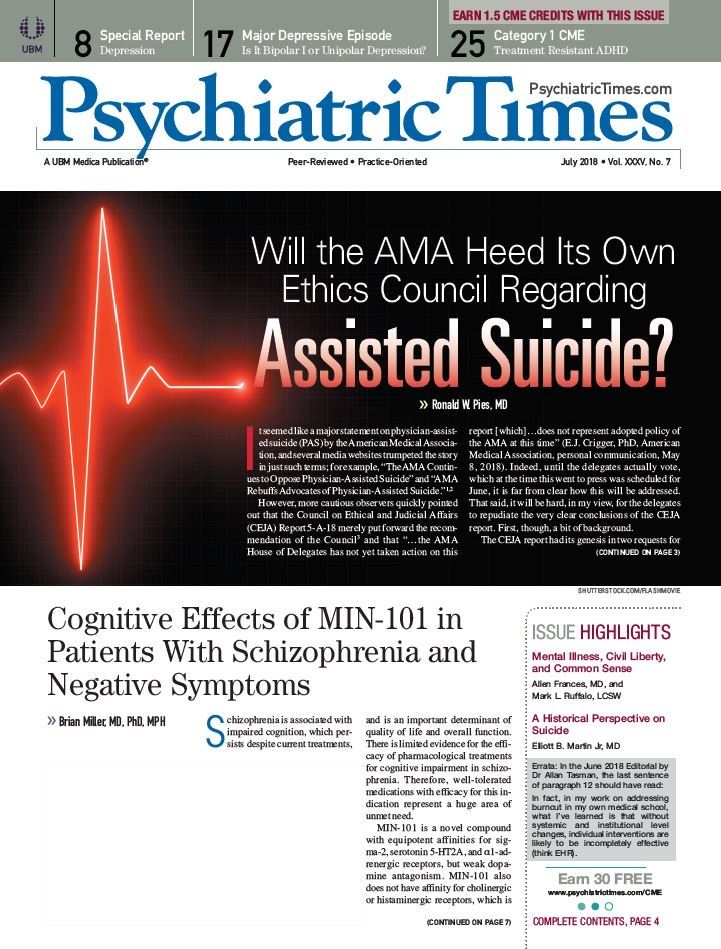Publication
Article
Psychiatric Times
5 Ways to Ask About Hypomania
Author(s):
Hypomania is critical to rule out, but hard to pin down. In part 1 of this 2-part series, Dr. Aiken shares his top pearls for making the diagnosis.
©Pressmaster/Shutterstock

"Have fun, and don’t worry about your work. As long as you don’t give an antidepressant to a patient with hypomania, you can’t go wrong.” It sounded easy at the time, as the attending welcomed us to the outpatient module of psychiatric residency. Fifteen years and over 10,000 structured interviews later, I can only attest to how hard it is to diagnose hypomania. Here are the top pearls I’ve learned along the way.
1 Calibrate your index of suspicion
Expert interviews suggest that hypomania is common among patients with depression. The rates range from 20% to 30% in primary care, 30% to 40% in psychiatric clinics, and, in those with treatment-resistant depression, 40% to 60%.1-4 Those numbers might suggest you need to raise your index of suspicion, or they may just trigger disbelief. My first reaction was the later, but when I started applying structured interviews to my work in a general adult private practice, I arrived at the same frequency: 40%.
2 Use a structured interview
Instruments like the MINI and the SCID are the closest we have to a gold standard in psychiatric diagnosis. Their hypomania sections, however, tend to suffer low reliability,5,6 so it’s helpful to augment them with paper-and-pencil screens that both the patient and a relative can complete. There are links to the SCID, MINI, and 3 screening tests (see http://www.moodtreatmentcenter.com/measurement).
3 Follow the clues
Psychologically, hypomania has a lot in common with addictions. Denial, lack of insight, and a tendency to minimize or forget these altered states get in the way of diagnosing them. When asking structured questions such as, “Have you ever had a period of time when you felt high, hyper, or full of energy?”, pay attention to vague answers like “not really,” “only when I’m excited,” or “not in a long time.” If your index of suspicion is high, those answers should prompt you to dig further.
4 Don’t explain away symptoms
Patients tend to experience mood symptoms as natural responses to life, whether depressive or hypomanic. Their explanations can leave us wondering: Was it the normal glow of romance, or did a hypomanic drive prompt that new relationship? Was it just an all-nighter during final exams in May, or springtime hypomania? Was it youthful folly, or did bipolar strike at the usual age of onset (15 to 20)? I have never found definitive answers to those questions, but ambiguous answers remind me to keep looking for clues as I get to know the patient better.
5 Comorbidities are a soft sign of bipolar, not a reason to dismiss it
All the symptoms of hypomania are common in other disorders:
• ADHD: hyper, distracted, racing thoughts, talkative, impulsive
• Borderline personality disorder: labile, impulsive, irritable
• PTSD: irritable, reckless behavior
• OCD: hyperactive around compulsions
• GAD: racing thoughts, distracted, irritable
• Addictions: impulsive, euphoric, decreased need for sleep
The problem is that 60% of patients with bipolar disorder have at least one of the comorbidities I just listed, so their presence should raise-not lower-the index of suspicion.7
Uncertainty is the rule with hypomania. I’ve followed some patients for 10 years before recognizing it. It’s humbling work, not unlike the type of dilemma Hippocrates wrestled with when he wrote that “Life is short; the art is long; opportunity fleeting; experience perilous; and decision difficult.”8 Tune in next month for part two of this guide, and never stop looking for clues.
This article was originally posted on 5/31/2018 and has since been updated.
Disclosures:
Dr. Aiken is the Director of the Mood Treatment Center, Editor in Chief of The Carlat Psychiatry Report, and Instructor in Clinical Psychiatry at the Wake Forest University School of Medicine. He does not accept honoraria from pharmaceutical companies but he receives honoraria from W.W. Norton & Co. for Bipolar, Not So Much, a book he coauthored with Jim Phelps, MD.
References:
1. Manning JS, Haykal RF, Connor PD, Akiskal HS. On the nature of depressive and anxious states in a family practice setting: the high prevalence of bipolar II and related disorders in a cohort followed longitudinally.Compr Psychiatry. 1997;38:102-8.
2. Akiskal HS, Akiskal KK, Lancrenon S, et al. Validating the bipolar spectrum in the French National EPIDEP Study: overview of the phenomenology and relative prevalence of its clinical prototypes.J Affect Disord. 2006;96:197-205.
3. Bschor T, Angst J, Azorin JM, et al. Are bipolar disorders underdiagnosed in patients with depressive episodes? Results of the multicenter BRIDGE screening study in Germany.J Affect Disord. 2012;142:45-52.
4. Francesca MM, Efisia LM, Alessandra GM, et al. Misdiagnosed hypomanic symptoms in patients with treatment-resistant major depressive disorder in Italy: results from the improve study. Clin Pract Epidemiol Ment Health. 2014;10:42-47.
5. Dunner DL, Tay LK. Diagnostic reliability of the history of hypomania in bipolar II patients and patients with major depression. Compr Psychiatry. 1993;34:303-7.
6. Andreasen NC, Grove WM, Shapiro RW, et al. Reliability of lifetime diagnosis: a multicenter collaborative perspective.Arch Gen Psychiatry. 1981;38:400-405.
7. Sasson Y, Chopra M, Harrari E, et al. Bipolar comorbidity: from diagnostic dilemmas to therapeutic challenge.Int J Neuropsychopharmacol. 2003;6:139-44.
8. Hippocrates. Aphorisms, iection 1. circa 460-377 b.c.







